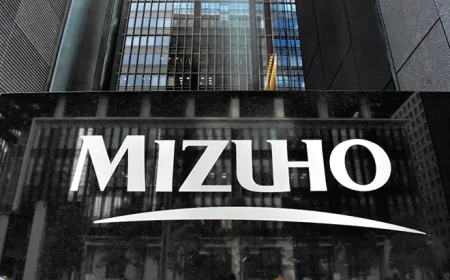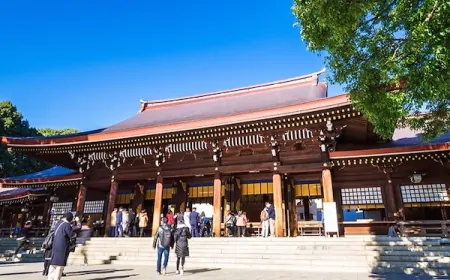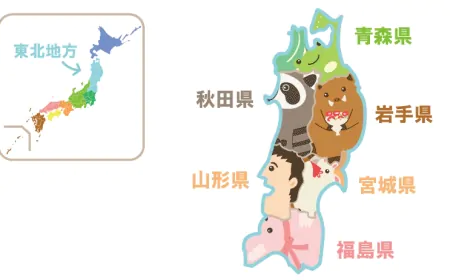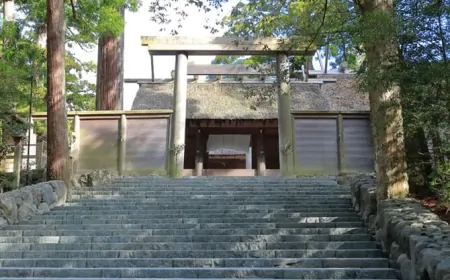5 unique traditional festivals in Japan
It is rare for any country to retain a long-standing traditional culture with typical festivals like Japan.

There are many holidays in a year, and most of them last for several days. Here are the 5 most unique festivals in the land of cherry blossoms.
Oshougatsu New Year Festival
Unlike neighboring countries such as Korea, China or Vietnam, Japan chooses January 1 of the solar calendar every year to celebrate the new year, called Oshogatsu. This is considered the largest holiday in Japan, taking place over many days with many different forms of celebration.
Oshogatsu Festival takes place from the 1st to the 3rd. Japanese people prepare for the festival from December 8 to December 12. On these days, every family cleans up, prepares furniture and decorates the house for the new year, such as placing a Kadomatsu tree or hanging a Shimekazari string in front of the house.
Like the traditional New Year in Vietnam, the Japanese will go to the temple on the first days of the new year, eat a year-end meal with traditional dishes, give New Year's money and Japanese children participate in folk games such as: Tokoage and badminton Hanetsuki.
Hanami Cherry Blossom Festival
Hanami in Japanese means viewing flowers, enjoying flowers. Hanami Festival is considered one of the largest and oldest flower festivals in Japan. Every year, at the end of March and the beginning of April, cherry blossoms all over Japan begin to bloom, and the Japanese eagerly await Hanami like a beautiful gift of spring.
Hanami takes place and lasts for about 10 days, during this holiday, the Japanese will sit under the beautiful cherry blossoms, hold parties, sing, dance together and comment on the beauty of flowers. You will easily see Japanese people wearing traditional kimonos, sharing warm meals with traditional dishes such as bento, sushi and sake.
Obon Lantern Festival
Obon is a traditional Japanese lantern festival, this is also considered the Great Festival of Vu Lan filial piety because this is an opportunity for children to express their filial piety and gratitude to their grandparents and parents. Obon usually takes place in July, in each region of Japan, there are different days to celebrate.
On the first days of the festival, people often hang lanterns in front of the house so that ancestors can visit, visit and repair the tomb. On the last day of the Obon festival, people bring lanterns and drop them on rivers, lakes, and shores, as a way to send the souls of the deceased back to their world. Usually, on the night of releasing lanterns, people also light fireworks.
Koinobori Matsuri Carp Festival
Koinobori in Japanese means carp chess, to the Japanese, carp symbolizes courage and tenacity when daring to cross the dance floor to turn into a dragon and do great things, just like the character of the heroes. boys, so Koinobori also means Festival of Boys.
It is a coincidence that the Carp Festival takes place on the 5th day of the 5th lunar month, which coincides with the Vietnamese Lunar New Year, however, the carp flag has been hung all over the streets of Japan since 2 months ago. On this holiday, in addition to the front door decorated with colorful carp flags, people often make traditional Obento dishes and dishes simulating carp with the desire to pray for their children to be born healthy and growing well.
Gion Festival
The Gion Festival is one of the largest festivals in Japan, held at Yasaka Shrine every July. With the meaning of praying for health and dispelling epidemics, people have held sacrifices to keep the spirit overcome sadness, fear and always be comfortable and pure.
One of the most unique activities of the festival is the Yamaboko Yunko parade on July 17 through the bustling streets of Tokyo. In addition to the parade, Gion also has a variety of preparation, fun and meeting activities such as the Mikoshi purification ceremony, the Hoko and Kama float ceremony. Gion Festival lasts throughout the month of July.
-------------------
Injavi.com - Visit Japan | Visit in Japan
Guide to living, studying and working in Japan
Related Products








































































































